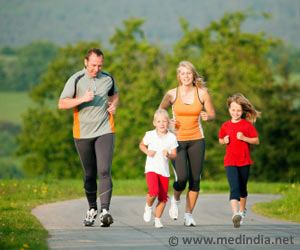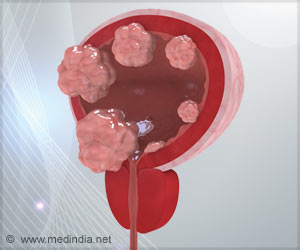It is comparatively thick, and sticky with yellow or orangey color. It is produced in very small amounts – 40 to 50 ml (1.4 to 1.8 fl oz) over 24 hours.
Colostrum serves as natural vaccination for the child due to the presence of high levels of antibodies and white blood cells in them. It also contains other minerals & vitamins and is easy to digest.
Uniqueness of Breast Milk
Breast milk is the first food for a child and is a stacked set of nutrition that beats every other nutritional substitute to it in the market. It includes all the basic essential nutrients for a child’s health, such as carbohydrates, proteins, and fats, and also water (for hydration). Other nutritional values are:
- Immune-boosting white blood cells for development and healing
- Up to 20 amino acids from 1000 types of proteins for building the body
- Around 200 complex sugars that act as prebiotics for good bacteria to the gut
- There are more than 40 enzymes that speed up various chemical reactions in the child’s body like digestion and immunity
- Growth factors for the healthy development of organs and various hormones
-
Potent vitamins and minerals for nourishment - Antibodies (immunoglobulins such as IgA, IgM, IgG) to kick off the infections
- Plenty of long-chain fatty acids are crucial for healthy brain development
World Breastfeeding Week
The international event endeavors to appreciate the power of breastfeeding in advancing child health & development and lowering infant mortality through ideal nutrition, and consequently, protecting women from ovarian and breast cancer.
Promoting this global initiative demands support systems to overcome various obstacles within the health system, the workplace (for working mothers), and the community.
Breastfeeding not only nourishes the health of the child and women but establishes a healthy future for the whole society.
The World Health Assembly (WHA) strives to achieve at least 50% exclusive breastfeeding in the first 6 months of the child by 2025.
Evolution of WBW
The annual week is perceived in commemoration of the 1990s Innocenti Declaration – a joint effort by the World Health Organization and UNICEF to “protect, promote and support breastfeeding.”
The week was endowed by World Alliance for Breastfeeding Action (WABA), in the following year of the declaration. The association empowers and encourages all women in their breastfeeding journeys.
In 2016, the United Nation’s Sustainable Development Goals (SDGs) aligned with WBW to foster WBW-SDGs Campaign. The lead includes healthcare systems, women and work, the International Code of Marketing of Breast milk Substitutes, community support, ecology, economy, science, education, and human rights.
The first World Breastfeeding Week was officially adopted in 1992by 70 countries, as per Very Well Family. Now almost 170 countries participate in this drive. The WBW was endorsed as an important breastfeeding promotion strategy by the World Health Assembly resolution in 2018.
Objective of WBW
The World Breastfeeding Week sets a platform to promote the huge benefits of breastfeeding for the welfare of babies and mothers and establishing food security. The main objective of WBW is:
- Inform: Celebrants about the selected theme of the year
- Anchor: The theme within the global breastfeeding agenda
- Engage: With individuals and organizations for greater impact
- Galvanize: Action on the selected theme and related issues
Join Hands to Support the Noble Cause
The international drive invites people all around the world to spread the message of breastfeeding. This can be simply done among your community or friends.
The information can also be shared on social media using the following hashtags:
#WBW2021
#WABA
#ProtectBreastfeeding
#SharedResponsibility
#breastfeeding
#SDGs
#worldbreastfeedingweek2021
#ProtectBreastfeedingaSharedResponsibility
#protectbreastfeedingtogether
#buildingbackbetter
#warmchain4breastfeeding
#breastfeeding4publichealth
Events to Promote
The global campaign may incorporate hosting an event, distributing informational pamphlets, creating awareness videos, photo contests, or reaching out to local organizations for volunteering.
With the downfall of health during the COVID-19 pandemic, it is more important to abide by the WBW concept of ‘building back better’ and re-create a warm chain of support for breastfeeding at all levels of society (both individual and public level).
To supplement the drive, Australian Breastfeeding Association (ABA) entertains a special live presentation for students studying midwifery (or other health-related courses) on Facebook on Wednesday, 4th August 2021 at 12:00 PM AEST.
Recommended Allowance of Breastfeeding
The optimal recommendations of breast milk by WHO and UNICEF are:
- Early initiation of breastfeeding within 1 hour of birth
- Exclusive breastfeeding for the first 6 months of life
- Continued breastfeeding up to 2 years of age or beyond, with the introduction of nutritionally adequate and safe complementary (solid) foods at 6 months
Facts on Breastfeeding
- Every 3 in 5 babies are not initiated breastfeeding in the first hour of life
- Exclusive breastfeeding for the recommended 6 months is lacking in every 2 out of 3 infants and the rate has not been improved in almost 2 decades
- All 17 of the United Nations Sustainable Development Goals can be linked with Breastfeeding
- Encouraging breastfeeding helps prevent 20,000 maternal deaths, 823,000 child deaths, $302 billion in economic losses, annually
- Breastfed children can perform better on intelligence tests
- Breastfeeding also decreases the likelihood of being overweight or obese in children
References :
- World Breastfeeding Week (WBW) – (https://waba.org.my/wbw/)
- World Breastfeeding Week 2021:1st August to the 7th August, Ideas, Theme
– (https://www.iaspaper.net/world-breastfeeding-week/) - World Breastfeeding Week
– (https://www.breastfeeding.asn.au/world-breastfeeding-week) - World Breastfeeding Week 2021 – (https://www.breastfeedingpartners.org/index.php)
- World Breastfeeding Week Is The Perfect Time To Celebrate Nursing Mamas Everywhere
– (https://www.romper.com/parenting/world-breastfeeding-week-2021) - Breastfeeding
– (https://www.who.int/health-topics/breastfeeding#tab=tab_1) - World Breastfeeding Week 2021
– (https://www.awarenessdays.com/awareness-days-calendar/world-breastfeeding-week-2021/) - What’s In Breast Milk?
– (https://americanpregnancy.org/healthy-pregnancy/first-year-of-life/whats-in-breastmilk/) - Breast milk composition: What’s in your breast milk?
– (https://www.medela.com/breastfeeding/mums-journey/breast-milk-composition#reference)
Source: Medindia



